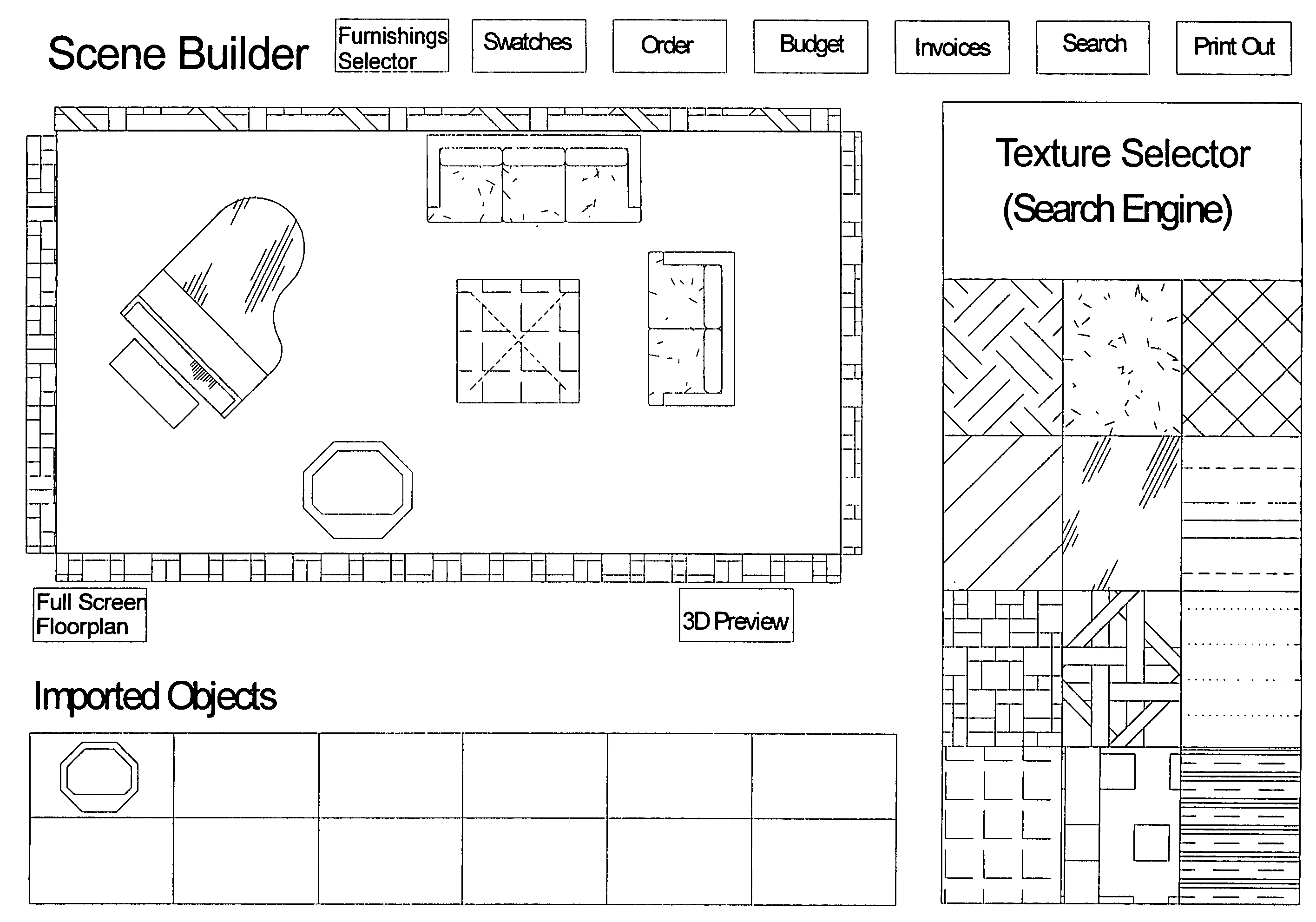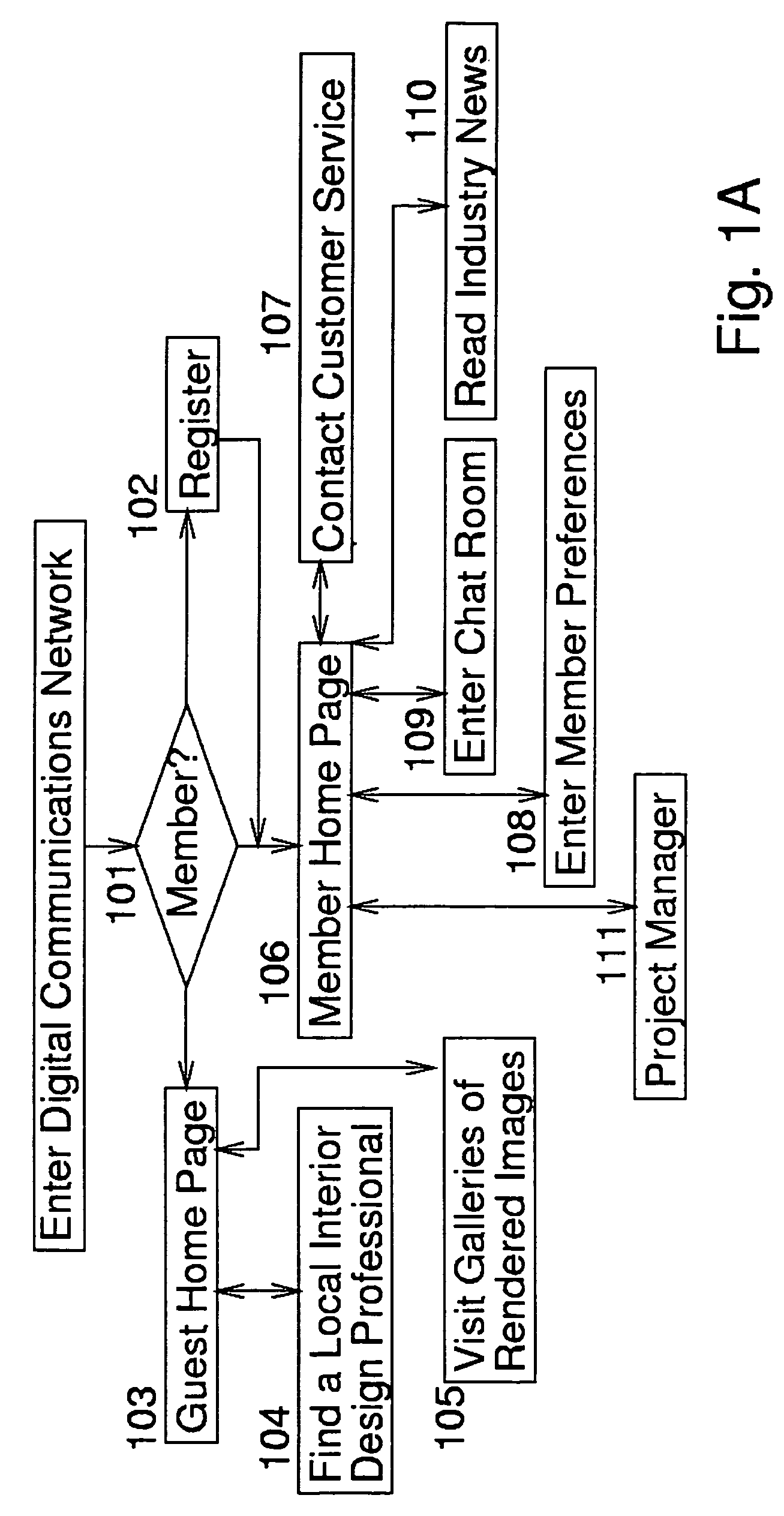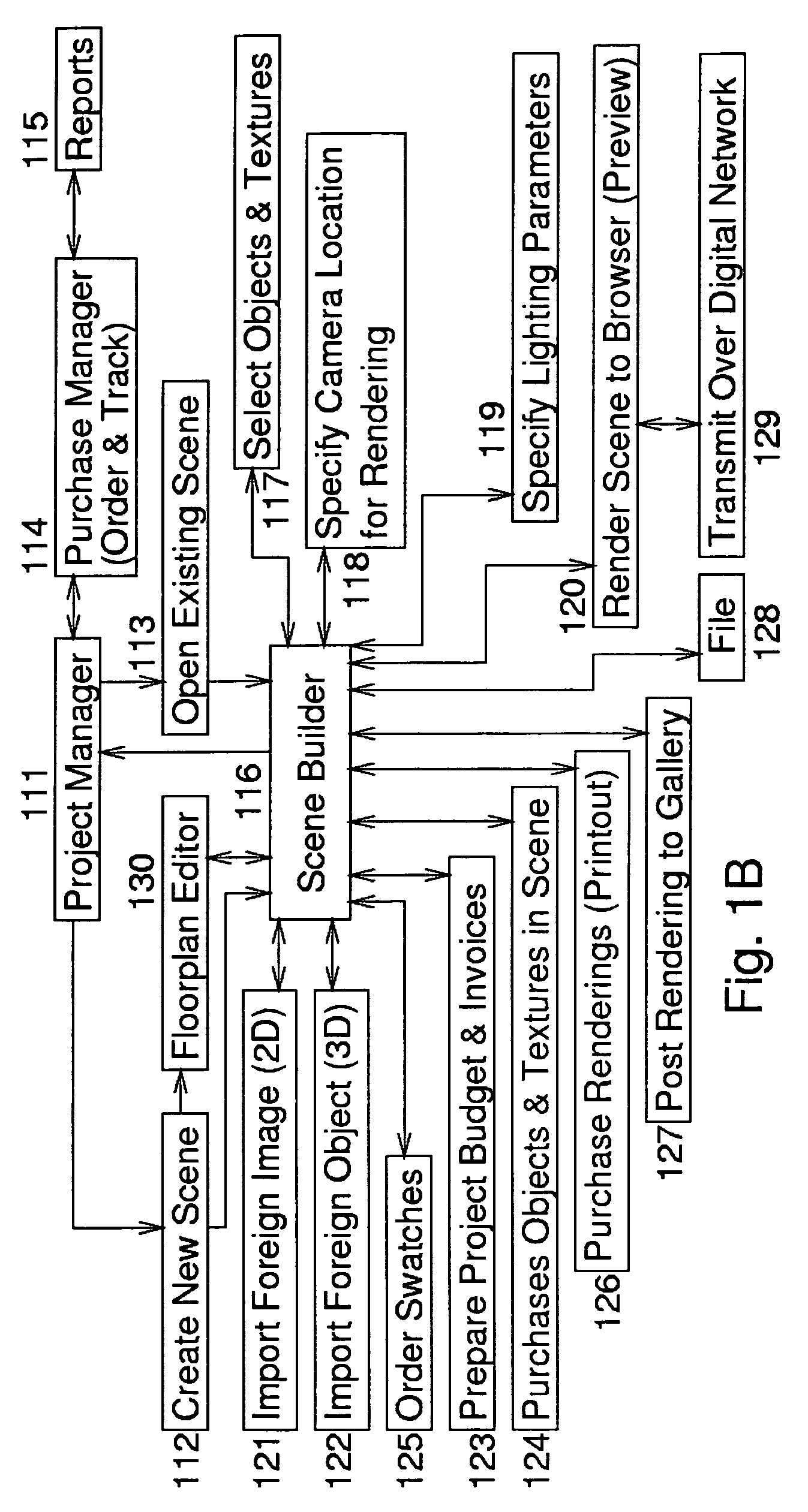Network-linked interactive three-dimensional composition and display of saleable objects in situ in viewer-selected scenes for purposes of promotion and procurement
a three-dimensional composition, interactive technology, applied in the field of computerized composition and display of perspective images of real or virtual three-dimensional objects, can solve the problems of inability to mitigate last limitation, and inability to map fabrics, etc., to achieve favorable opinion and/or purchase decision, high fidelity, and sufficient accuracy and appeal
- Summary
- Abstract
- Description
- Claims
- Application Information
AI Technical Summary
Benefits of technology
Problems solved by technology
Method used
Image
Examples
Embodiment Construction
[0101]Although specific embodiments of the invention will now be described with reference to the drawings, it should be understood that such embodiments are by way of example only and are merely illustrative of but a small number of the many possible specific embodiments to which the principles of the invention may be applied. Various changes and modifications obvious to one skilled in the art to which the invention pertains are deemed to be within the spirit, scope and contemplation of the invention as further defined in the appended claims.
1. Application and Benefits of the Present Invention
[0102]In accordance with the present invention, a business based on provision of scene composition services and / or scenes and / or product images is a sort of Internet-accessible computerized graphics service provider. However, it must be emphasized that the preferred business model of the present invention is preferably not based on selling scene composition and imaging services, but rather on p...
PUM
 Login to View More
Login to View More Abstract
Description
Claims
Application Information
 Login to View More
Login to View More - R&D
- Intellectual Property
- Life Sciences
- Materials
- Tech Scout
- Unparalleled Data Quality
- Higher Quality Content
- 60% Fewer Hallucinations
Browse by: Latest US Patents, China's latest patents, Technical Efficacy Thesaurus, Application Domain, Technology Topic, Popular Technical Reports.
© 2025 PatSnap. All rights reserved.Legal|Privacy policy|Modern Slavery Act Transparency Statement|Sitemap|About US| Contact US: help@patsnap.com



